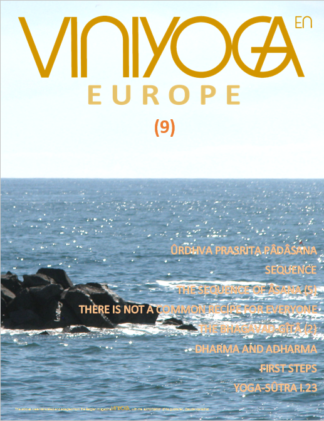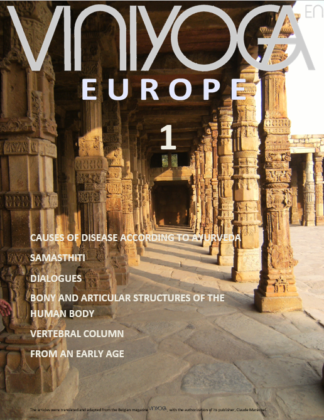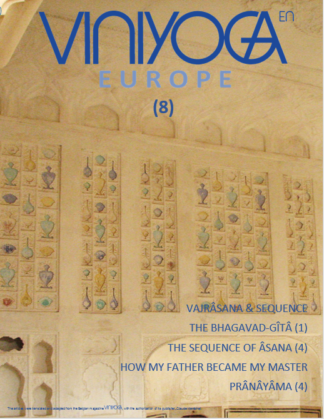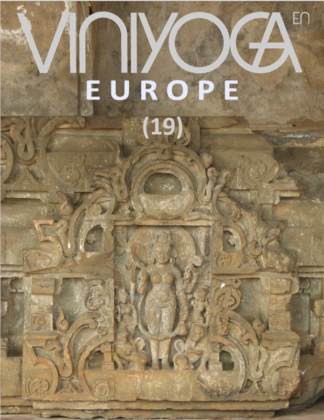Description
(41 pages)
Nâvâsana, or Boat Pose, is a seated position where the body balances on the buttocks. This posture strengthens the abdominal muscles.
Numerous variations require less muscular effort, which renders this pose accessible to everyone.
By Bernard Bouanchaud
SEQUENCE: NÂVÂSANA
In order to prepare for nâvâsana we need to warm up our body and pay particular attention to the muscles that will be required in this posture. We also need to tackle this pose gradually. We should do the counter postures carefully, devoting the necessary time to them.
By Claude Maréchal
VINIYOGA OR HOW TO HEAL THE MIND: ekatattva and emotional life
Patanjali indicates a series of alternatives (vâ) for those who are nor receptive to the absolute aspect of devotional yoga or for those whose faith is not strong enough.
These people should engage in one of their preferred paths (eka-tattva), which range from social life to meditation and include work on their breathing, conscious use of their sensory organs and exploration of their sleep and dreams.
These approaches open very useful perspectives, in terms of evolution, as well as of healing.
By Claude Maréchal with the collaboration of Élizabeth Wieczorek
TAMING THE TIGER: Breathing exercises in the Hatha-Yoga-Pradîpikâ
This article, the third of this series, is about prânâyâma as it is presented in the Hatha-Yoga-Pradîpikâ. Which are the necessary conditions to practice it, the relevant objectives and possible risks?
By Uwe Bräutigam
DEPENDING ON THE AGE AND ABILITY OF EACH ONE
Correct posture and a respiratory rhythm that is adapted to one’s ability are preliminaries to the practice of prânâyâma.
By T.K.V. Desikachar
YOGA AND ASTHMA
This article reflects the personal and also professional experience of an asthmatic kinesitherapist, who is also a yoga teacher.
By Catherine Pin-Chiabaut
YOGA-SÛTRA (I.37)
In this section of the first chapter, which is dedicated to the “practice that is focused on a principle”, (eka-tattva) Patanjali continues to tell us about the methods to reduce mental agitation.
This time, he presents a very popular method in India. Recalling a meeting with a sage, connecting to a sacred object or work, or remembering a visit to a sacred place may reduce mental agitation.
Comments by Professor T. Krishnamacharya; presentation and explanations by T.K.V. Desikachar





